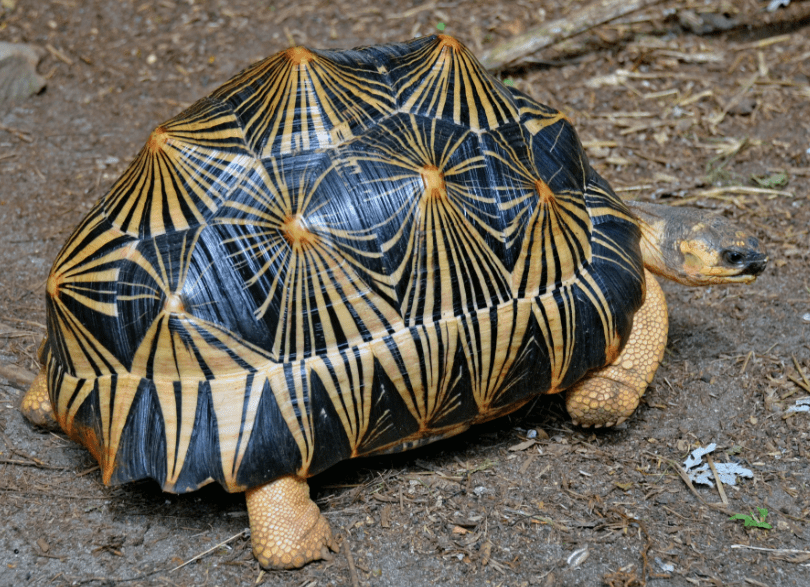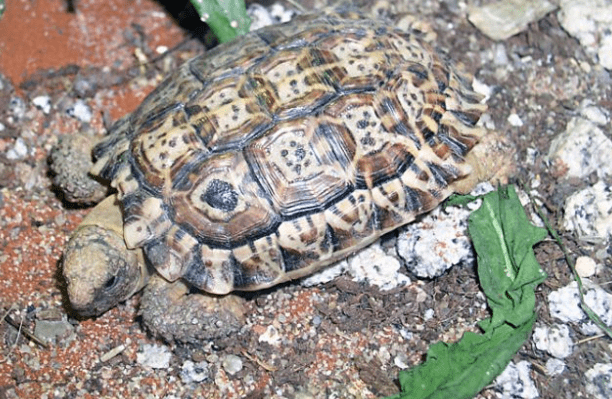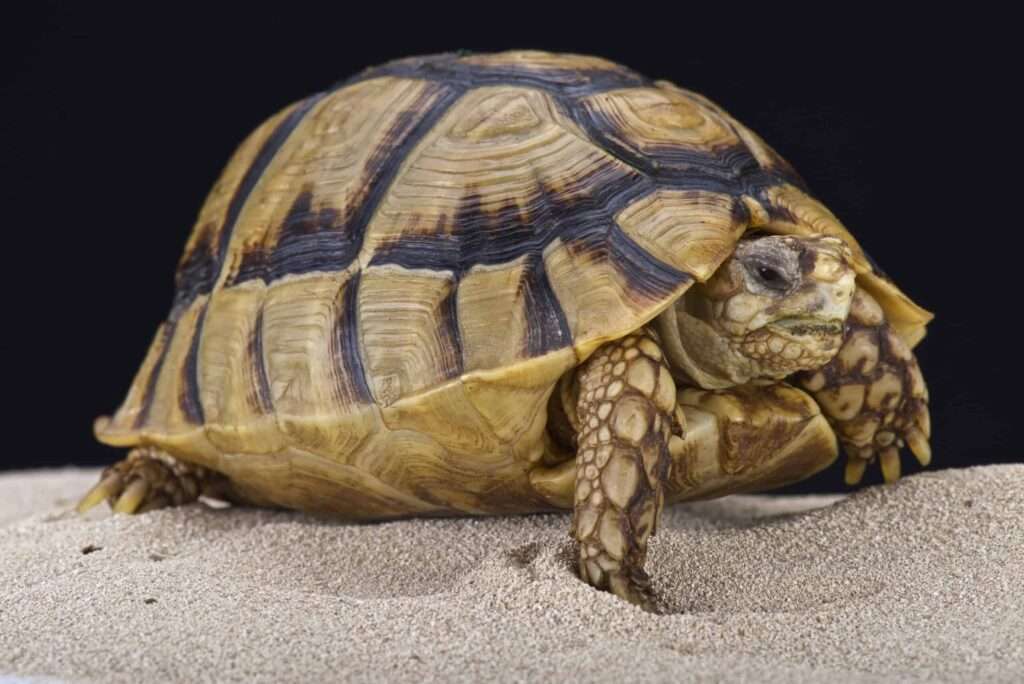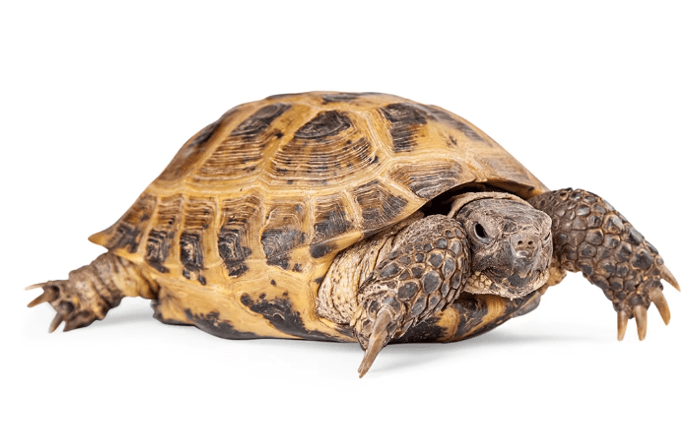
Description
One of the most beautiful tortoises is the Radiated tortoise, which is native to Madagascar. This tortoise’s distinguishing pattern is made up of vivid yellow markings radiating out from the centre of each plate on its high-domed, dark carapace. As a person ages, the black pigment in their shell starts to disappear, leaving them with a lighter-colored shell. The undershell, or plastron, of the males has a notch below the tail and is longer. Hatchlings are black and off-white, but they soon take on the vibrant colouring of adults.
Habitat
This tortoise, which is native to Madagascar, only inhabits the southern part of the island. They have been made aware of a few other locations, such as Mauritius and Réunion. Dry forests are their preferred environment, particularly diderae (thorn) forests and woodlands in southern Madagascar.
Behavior
The Radiated tortoise, like many other tortoise species, usually leads a fairly lonely life, however it is not unusual to find a group of them grazing together (especially during the breeding season). They frequently graze there, which helps to keep the plants there well cut. These creatures can go for extended stretches without drinking, but they prefer warmth and prefer to drink a lot whenever they can. They burrow during the hottest seasons of the year to protect themselves from extreme heat and dehydration. The radiated tortoise is remarkably adapted to the varying seasons, from the dry and arid to the intense monsoon rains, when it is said that they virtually dance in the rain to shake it off. When frightened, they screech loudly to intimidate and frighten away a predator. Although usually calm, radiated tortoises can turn hostile when they feel a danger from a human.

Keeping as Pet
Enclosure size
In warmer climes, radiated tortoises will prosper in a sizable outdoor cage. Adults need a minimum 10 by 15-foot habitat that can house two to three animals, while hatchlings need a 2 by 3-foot enclosure. As an alternative, they can be kept in a sizable vivarium with regular access to natural light that is at least 4 by 6 feet (for one tortoise).
The finest material to build the enclosure with is wood, as steel or concrete can harm the animal’s exquisite shell. For mature tortoises, the enclosure walls should be at least 10 inches height; for juvenile tortoises, they should be 4 inches tall.
Temperature and Humidity
In its natural habitat, the radiated turtle is used to high temperatures and little humidity. The ideal temperature for the tortoise in an outdoor habitat is 95°F during the day and no lower than 70°F at night. Owners should provide the radiated tortoise an additional source of heat if the temperature falls below 55°F. The radiated turtle might benefit from a 100-160W heat light. To prevent overheating, the cage must have enough room for the tortoise to escape the heater if necessary.
Do not position the heating light over the damp areas of the enclosure in order to maintain the required humidity levels. Put a box filled with wet sphagnum moss at the end of the cage that is opposite the heat lamp to create various microclimates for the radiated tortoise inside. No less than 50% humidity should be present inside the enclosure. Consider adding a water dish to the habitat for extra moisture, so the radiated tortoise can drink from it or stroll into it to cool itself. If the turtle is housed outside, think about setting up a sprinkler to maintain constant humidity levels on hotter days.
Food and Water
The radiated tortoise is an herbivorous grazer. They prosper when fed a diverse diet of plants, succulents, grass, and flowers. The leafy greens kale and bok choy are favourites of these tortoises. They can also have prepared foods like Mazuri and Marion, but these should first be softened with water. Fruit can be consumed by radiated tortoises as well, although too much might lead to health problems like diarrhoea and dehydration. To give the tortoise constant access to food, grow some edible plants inside the enclosure. To maintain the radiated tortoises’ shells strong and healthy, give them more calcium supplements. Although radiated tortoises don’t drink much, it’s still a good idea to keep a water supply in the enclosure, like a water bowl or a water dish. The owner is responsible for periodically replacing and cleaning the water.
Table





